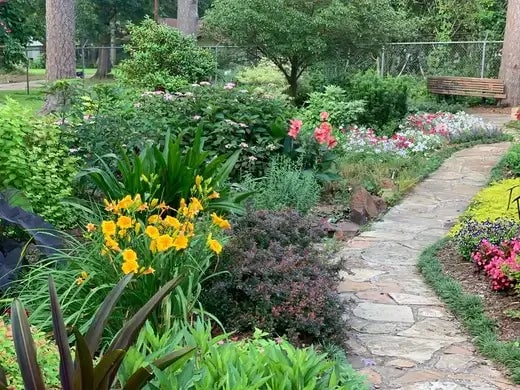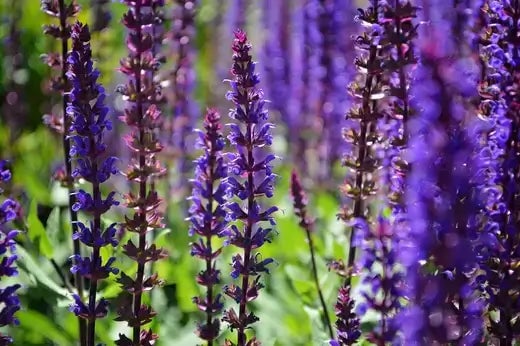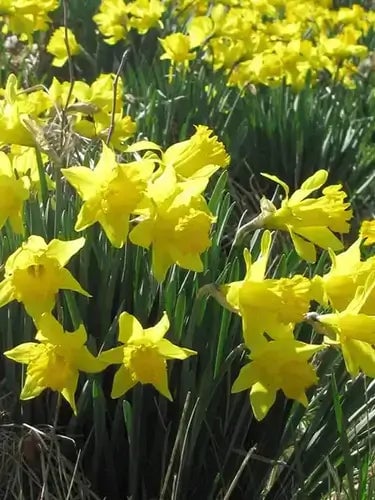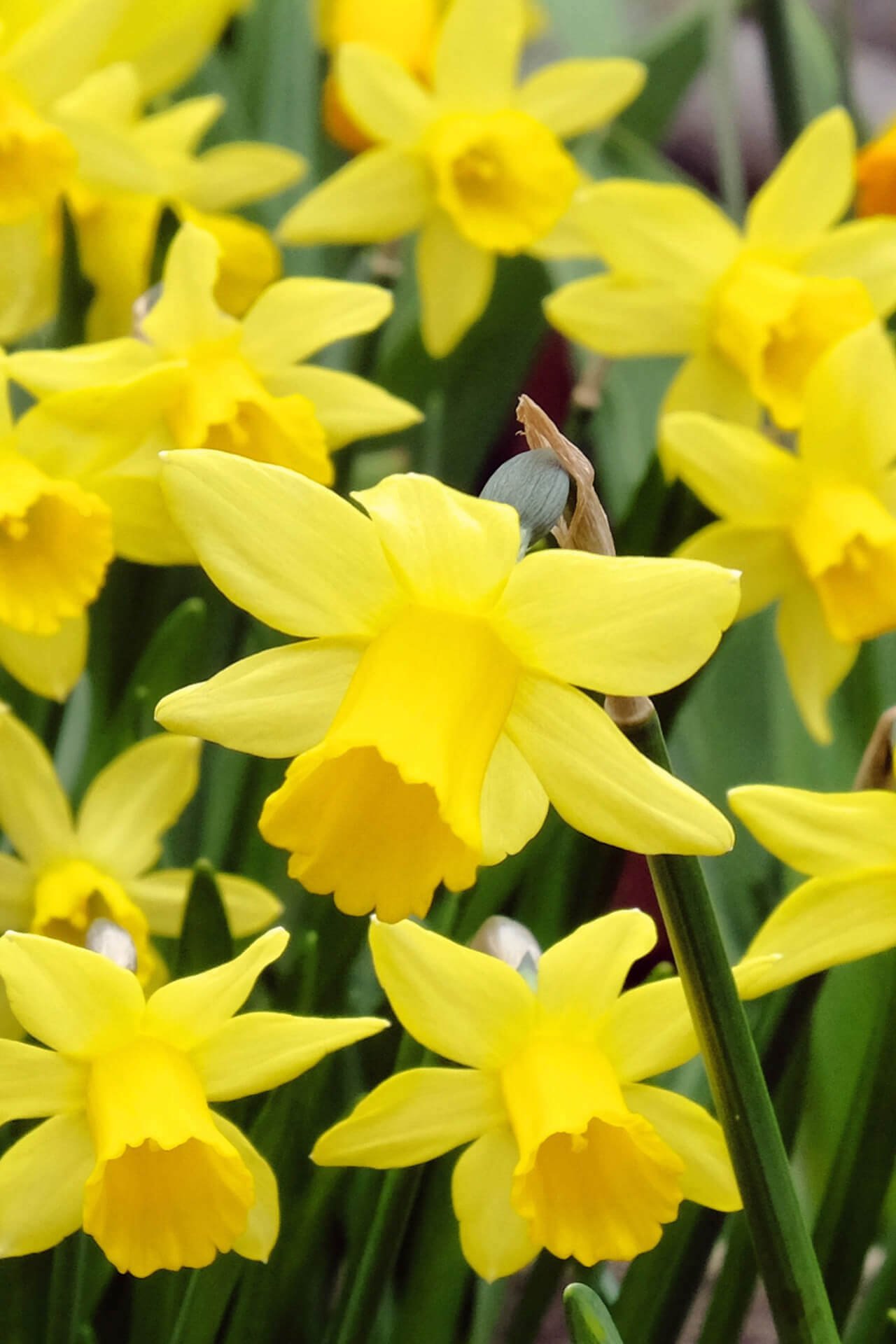There's nothing like the cheerful sight of daffodils to mark the end of winter's gloom. These golden beauties, known scientifically as Narcissus, are some of the most popular springtime flowers for a reason. Their vibrant yellow petals and trumpet-shaped blooms can brighten any garden, filling it with charm and promise for warmer days. But daffodils aren't just about good looks-they've got a story to tell and plenty of fascinating traits.
First and foremost, daffodils are incredibly tough plants. Despite their delicate appearance, they can withstand late frosts and cold snaps that might spell trouble for less hardy flowers. Once planted, daffodil bulbs return yearly, often multiplying and spreading like nature's saying, "More is better." They're a dream for gardeners who like low-maintenance beauty, requiring little more than a sunny spot and well-draining soil to thrive.
Daffodils also have a reputation for being disagreeable-at least to wildlife. Deer and rabbits steer clear of their leaves and bulbs, which contain a toxic substance called lycorine. This natural defense mechanism helps ensure their survival, making them a reliable choice for gardens plagued by curious critters.
Daffodils' Symbolic and Historical Charm
These flowers have a rich history and deep symbolism. In many cultures, daffodils represent renewal and new beginnings, ideally suited to their role as harbingers of spring. They're often associated with hope, cheerfulness, and friendship-an ideal bouquet to share with someone special.
Interestingly, daffodils also hold a prominent place in literature and art. Perhaps the most famous mention comes from William Wordsworth's poem, describing them as "a host of golden daffodils." The image of these flowers dancing in the breeze has stuck with readers for generations, making them a timeless emblem of natural beauty.
What's more, daffodils are surprisingly versatile. While they're most famous for their sunny yellow blooms, there are varieties of white, orange, and even pink, offering something for every garden palette. They're also fantastic as cut flowers, adding a touch of elegance and fragrance to indoor arrangements.
Whether planted in a sprawling garden bed or lining a walkway, daffodils bring joy and resilience with every bloom. They don't just grow-they thrive, spreading beauty and a sense of renewal wherever they're planted. And isn't that what spring is all about?
Annual vs. Perennial: What's the difference?
Annuals are plants that grow, flower, seed, and die off in a single year
Perennials are plants that grow and return year after year.
Are Daffodils Perennial?
Yes, daffodils are perennial plants.
In fact, daffodils are some of the most reliable perennial bulbs there are. The bulbs form underground colonies that produce offspring. You won't need to replace them- they will continue to bloom year after year!
To have a long and prosperous life, daffodils need the right growing conditions. If you take care of your daffodils, they will reward you for years to come.
A Brief History of Daffodils
Perennial daffodils (Narcissus) are native to areas in the Mediterranean, southern Europe, and Asia. In nature, they grow in grasslands, scrublands, woodlands, riverbanks, and rock crevices. While not native to North America, daffodils thrive in zones four to eight.
In Europe, their popularity increased between the 16th and 19th centuries. Then, the Dutch began to expand the commercialization of plants. They began to distribute the bulbs to other parts of the world. Eventually, they made their way to North America. And the rest is history!
Name Origins:
The name Narcissus refers to the genus or group of plants daffodils are a part of. The legend is said to originate from the story of the tragic mythical Greek character by the same name.
The Man, the Myth, the Legend:
Narcissus was revered for his beauty but was warned never to see himself. But one day, he spotted his reflection in the still waters of a pond. At that moment, he fell in love with himself. From then on, he never left his reflection and pined away. Legend says that the Narcissus plant sprung up where he had perished, forever to face the waters of its own reflection.
But which came first- Narcissus the person or Narcissus the plant?
The record of the name Narcissus predated the myth. The etymology, or root word, of Narcissus, was pre-Greek and meant "numbness." Perhaps the beauty of the plant was intoxicating. Or maybe its fragrance left its admirers in a trance. No one knows for sure.
Why Are Daffodils so Popular?
Perennial daffodils seem to be everywhere in the spring. Along with tulips, they are one of the most popular spring-flowering bulbs. Here are what makes them a staple in many gardens:
They are easy to grow
Daffodils are one of the easiest plants to grow. They are low-maintenance and division is not necessary. However, for more blooming we recommend division every five years or so. Dividing the bulbs allows more space for the roots to expand. Also, it provides you with more bulbs to plant elsewhere or give away!
There are many species to choose from
It is estimated that there are around 50 species of perennial daffodils. Whether you are looking for all-white perennial daffodils or a yellow or orange daffodil, there are plenty of options.
They are great to plant with children
Many young children love playing outside and exploring nature. Planting with them can be a fun and easy activity that everyone can benefit from.
Because the bulbs are large, they are easy to handle. Plus planting daffodils and other bulbs is a good learning opportunity. It teaches the little ones about nature and patience.
They are deer and rabbit resistance
Deer-related crop damage is on the rise. So, it is important to have some deer-resistant plants. Because of their bitter taste and mild toxicity, animals tend to avoid daffodils. Rest assured, your daffodils will be safe from deer (and rabbits).
How to plant Daffodils:
-
Check your soil, the ideal pH range for perennial daffodils is 6.0-7.0. They prefer acidic soils but will tolerate alkaline soils. If you have heavy clay, we recommend that you amend the soil or plant the bulbs in containers
-
Order or buy bulbs for autumn planting. Perennial daffodils need a period of cold temperatures for their dormancy. Planting them in the fall will allow them to bloom the following springs
-
Find a sunny spot in the garden. Daffodils will tolerate some shade, but not full shade
-
Toss your bulbs on the planting location and plant them where they land. This tried and true method of bulb planting makes it look more natural. You can plant more formally if you prefer, but not all bulbs may be successful.
-
Plant the bulb pointy end up so that the tip is about 2 inches away from the surface. Cover gently with soil
-
Mulch the ground with about 1 inch of mulch if you have it
-
Water all bulbs immediately after planting
-
Wait until winter comes and goes and then…
-
Enjoy!
-
After 5 years or so, you can dig the bulbs up, divide them and replant as you see fit
These vibrant yellow daffodils are a classic. Their small, trumpet-like flowers will grow between 12 to 18 inches tall. They can be planted in clusters or by themselves individually. These daffodils thrive in full sun and well-draining soil.
White Perennial Daffodils
This has a similar flower to the Yellow Daffodil, but it is all white in color with yellow stamen. The White Daffodil has elegant, fragrant flowers. Because of their striking appearance, passers-by double-take. Like the Yellow Daffodil, these can be planted in groups or individually.
FAQ
Are all species of daffodils perennial?
Yes. In zones 4 through 8, daffodils will return year after year. It is essential that they are planted correctly and have the right conditions. Make sure the soil is loose and will drain properly.
How can I prevent animals from digging up my perennial daffodils?
While these are generally animal-resistant. However, there are some persistent critters that may try to dig up your bulbs. The best and easiest method of animal resistance is by using chicken wire.
We recommend placing a panel of chicken wire on top of the ground where you have planted bulbs. You can cover this with soil, mulch, or put weights on the corners. The bulbs will grow up through the wire and the animals won't be able to dig them up.
When should I plant perennial daffodils and tulips?
The best time to plant daffodils is in the fall. Tulips can be planted at the same time. Planting both at the same time ensures that you won't accidentally dig up existing bulbs.
Daffodils and tulips can be planted in spring, but will not bloom until the following year.
How many kinds of perennial daffodils are there?
It is estimated that there are around 50 species of perennial daffodils in the Narcissus family. With such a wide range, there is a daffodil that can suit just about any garden.
Creative Ways to Utilize Daffodils
The sunny yellow petals and trumpet-shaped blooms of daffodils signify the arrival of spring as they emerge among the first flowers of the season. These cherished blossoms display cheerful colors but contain deep historical meanings and practical applications that date back hundreds of years. While people commonly appreciate daffodils for their decorative qualities, they also provide a variety of hidden advantages and imaginative uses. You can use daffodils to enhance your environment and daily routines in multiple ways.
Placing daffodils in gardens and landscapes creates an eye-catching effect. The timing of your fall bulb planting guarantees daffodils will bloom at the end of winter. Daffodils require moderate watering and well-drained soil to remain low-maintenance plants. The bright petals of daffodils create a striking visual against green grass, budding shrubs, and early spring blooms such as crocuses and tulips. Daffodil gardening brightens outdoor spaces with its cheerful display after winter ends.
Daffodils are ideal choices for creating cut-flower arrangements. Placing a new bouquet of daffodils on a kitchen table or windowsill quickly transforms your home atmosphere. The soft scent of these flowers enhances their visual appeal while complementing springtime blossoms like hyacinths and ranunculus. A vase of daffodils in your entrance or living area offers guests a welcoming atmosphere while showcasing the positive symbolism these flowers represent.
The symbolism of daffodils extends historically to represent renewal, fresh starts, and hope. People frequently select daffodils for ceremonial occasions or as presents during significant life changes because they symbolize new beginnings and renewal. Daffodils hold special cultural meaning in specific societies. The national flower of Wales is the daffodil, which represents pride and is traditionally worn during Saint David's Day celebrations in early March. Symbolic celebrations benefit from daffodils because their association with renewal and optimism makes them a significant choice.
Daffodils can be used for crafting and DIY projects beyond their decorative and symbolic meanings. Dried daffodil petals retain their brilliant colors, making them excellent decorations for handmade bookmarks and greeting cards or for use in framed artwork. A spring wreath with seasonal charm can be created by weaving fresh or dried daffodils into your front door decoration. Kids often enjoy straightforward assignments, including embellishing picture frames or notebooks using dried petals.
Daffodils enhance outdoor spaces' beauty and serve as a natural repellent for gardens against toxic substances in daffodils, making them an unappealing food source for deer and several small animals such as rodents and rabbits. Creating a protective border of daffodil bulbs around more vulnerable flowers and vegetables helps keep hungry critters away. By adopting this organic pest control method, gardeners can avoid chemical repellents, which adds aesthetic value to vegetable plots and raised beds.
The presence of galantamine makes daffodils valuable subjects in medical and scientific research projects focused on Alzheimer's disease treatment. Research indicates that daffodils possess multiple practical functions beyond their decorative or symbolic significance. Daffodils deliver delight and hope with bright yellow sunshine to any activity where they appear, including gardening, bouquet arrangement, crafting, or supporting essential causes. Diverse uses of these flowers in your daily life allow you to embrace their everlasting beauty and brighten up each season.
Read more

Annuals vs. perennials. It can be difficult to remember which is which. Simply put: annuals live for one year whereas perennials return year after year. Read on to see which you will need for your ...

Salvias are a much loved plant that can be found in many gardens. The salvia family includes culinary sage and ornamental flowering plants. Here, we tell you what's perennial and what's not. The an...



